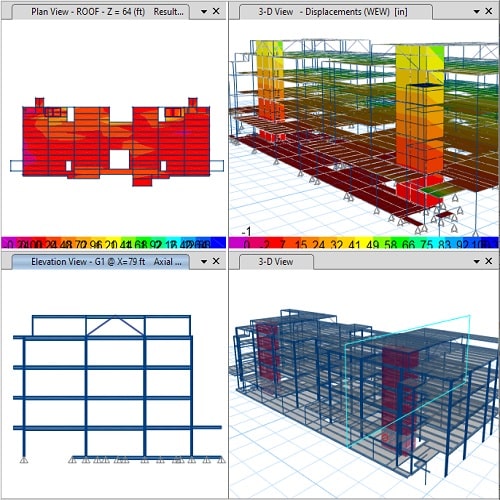Structure Design & Load Analysis
Structure design and load analysis are important processes in the construction of any building or structure. The design of a structure should be based on the expected loads that the structure will be subjected to during its lifetime. Load analysis involves calculating the forces that will act on the structure, while structure design involves designing the structure to withstand these forces.
Here are some key steps involved in structure design and load analysis:
- Determine the loads: The first step is to determine the loads that the structure will be subjected to, such as dead loads (the weight of the structure and its contents), live loads (people, equipment, etc.), wind loads, seismic loads, and thermal loads.
- Calculate the forces: The next step is to calculate the forces that will act on the structure due to these loads. This involves using mathematical equations and computer simulations to determine the magnitude and direction of the forces.
- Design the structure: Once the forces have been calculated, the next step is to design the structure to withstand these forces. This involves selecting appropriate materials, sizing the structural members, and designing connections between members.
- Conduct a structural analysis: Once the structure has been designed, a structural analysis should be conducted to ensure that it can withstand the expected loads. This involves using mathematical models and computer simulations to test the strength and stability of the structure.
- Make adjustments: Based on the results of the structural analysis, adjustments may need to be made to the design of the structure. This may involve changing the size of structural members, adding additional support, or changing the type of material used.
- Finalize the design: Once the adjustments have been made, the final design of the structure can be completed. This includes creating detailed drawings and specifications that can be used during the construction phase.
By following these steps, designers and engineers can ensure that a structure is designed to withstand the loads it will be subjected to, and can minimize the risk of structural failure. This is important for ensuring the safety of occupants and the longevity of the structure.

